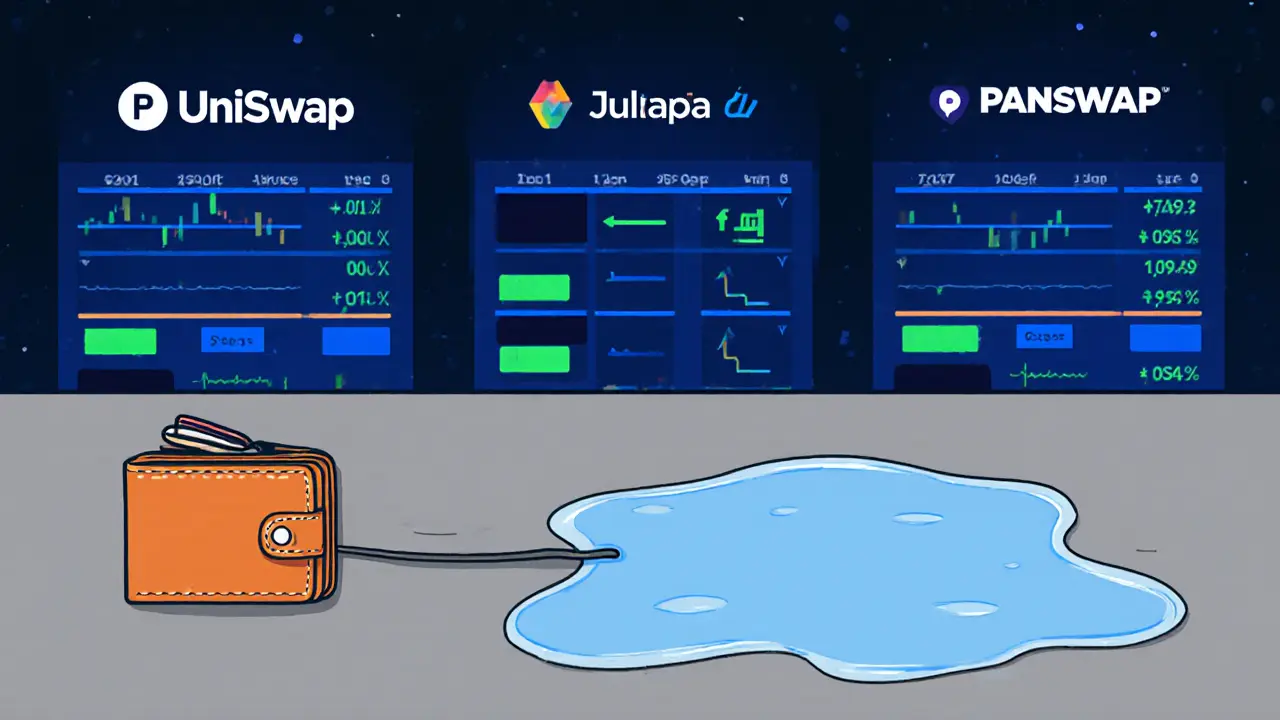JulSwap Review: What It Is, How It Works, and If It’s Safe
When you hear JulSwap, a decentralized exchange built on the Binance Smart Chain that lets users trade tokens with low fees and no intermediaries. Also known as JulSwap DEX, it’s one of many automated market makers trying to compete with giants like PancakeSwap. But unlike those platforms, JulSwap doesn’t have big marketing budgets or verified audits. So what’s real about it—and what’s just noise?
JulSwap operates like most BSC DEXs: you connect your wallet, pick two tokens, and swap them using liquidity pools. No KYC, no sign-up, no middleman. But here’s the catch—most JulSwap trading pairs have tiny liquidity. If you try to trade more than a few hundred dollars, your price will slippage hard. And unlike Uniswap or PancakeSwap, JulSwap doesn’t have a track record of surviving bear markets. It’s a project that popped up during a DeFi hype wave and never really grew beyond a small group of early users.
Its native token, JulSwap token, the utility token used for fees, staking, and governance on the JulSwap platform, has almost no trading volume outside of its own pool. That’s a red flag. Tokens with no real demand don’t hold value—even if they promise high yields. You’ll find plenty of YouTube videos claiming you can earn 50% APY by staking JulSwap tokens, but those numbers are based on fake liquidity and unsustainable reward schedules. Real yield farming needs real users, not just bots.
JulSwap also lacks transparency. No public team, no roadmap updates since 2022, and no security audit reports you can actually read. Compare that to platforms like PancakeSwap, a leading decentralized exchange on Binance Smart Chain with billions in liquidity and a proven history of upgrades and community governance, and the difference is clear. PancakeSwap has been tested in crashes, rallies, and regulatory pressure. JulSwap hasn’t even survived a minor market dip.
So why does JulSwap still show up in search results? Because people are chasing quick gains. They see a new DEX, hear about airdrops, and assume it’s the next big thing. But the crypto market doesn’t reward hype—it rewards utility and trust. If a platform can’t show you who’s behind it, how much liquidity is real, or what happens if the devs disappear, it’s not a platform—it’s a gamble.
Below, you’ll find real reviews, breakdowns of its tokenomics, and comparisons with other BSC exchanges that actually deliver. Some posts expose JulSwap as a fading project. Others dig into why similar DEXs fail. You’ll also see what happens when users try to withdraw from low-liquidity pools, and how fake yield claims lure people into losing money. This isn’t a list of hype. It’s a collection of facts from people who tried JulSwap—and walked away.
JulSwap Crypto Exchange Review: Is This Decentralized Exchange Still Worth Using in 2025?
JulSwap is a fading decentralized exchange with shallow liquidity, high slippage, and near-zero trading volume. Its JULD token offers negligible rewards. Avoid it for serious trading-choose Uniswap or PancakeSwap instead.
Details +